Mistakes Chefs Want You To Avoid When Cooking With Jalapeños
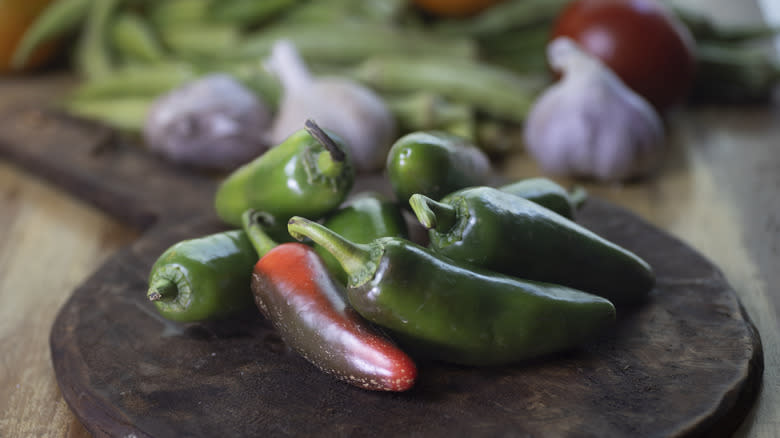
Jalapeño peppers are one of the most ubiquitous chiles nationwide, a favorite in everything from salsas to nachos to tacos. So, it's surprising that so many consumers get so much wrong about this versatile chile, from their season to the best way to prepare them to assuming the only thing they bring to the table is heat. Jalapeños may be spicy, but they've also got a phenomenal complexity, according to Chris Arellanes, Corporate Executive Chef of KYU Restaurants. "They add depth, a touch of spice and help elevate the salinity and acid in specific dishes," he says, citing sauces and vinaigrettes as some of his favorites.
Our experts have delved deep into some of the most common mistakes consumers make when cooking with jalapeños, from how to choose them to the best way to cook them to managing that heat. These are the ones they think it's high time we stopped making once and for all.
Read more: 16 Little-Known Facts About Salt
Not Embracing Their Versatility
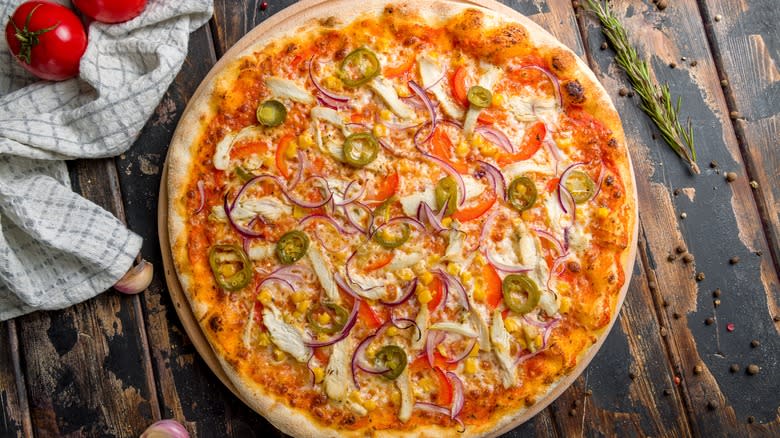
Jalapeños are super versatile, popping up in all manner of recipes. Chef/Co-Owner James Wozniuk of Makan DC and Makan Charleston loves to char them on the grill and transform them into a bright salsa verde. Carlos Cruz, Head Chef of China Poblano, also loves using them in salsas, but he also says they're great raw, sliced into a salad. Alex Serena, Bar Manager at Telefèric Barcelona, notes that they're great in a brava sauce with tomatoes, and Executive Chef and Culinary Director Ben Murray of gastro-advocacy restaurant, Immigrant Food, loves blending them into aguachile sauce to reap the benefits of their bright freshness. And that's not all.
"You can burn them, and then peel the skin so you have a smoky/roasted flavor where you can make a charred jalapeno mayo or chop them up and add them into a vinaigrette for a nice gentle heat and depth of flavor," he says. "You can make smoked jalapeños, pickle jalapeños, ferment them to create a nice hot sauce; there are a ton of possibilities!"
And according to Morgan de Paulo, Executive Chef of The LINE San Francisco, you don't even need to confine yourself to Mexican recipes. "I enjoy jalapeños in a wide variety of cuisines," he says. Jalapeños are welcome on pizza, in fritters, and more.
Mistaking Jalapeños For Serranos
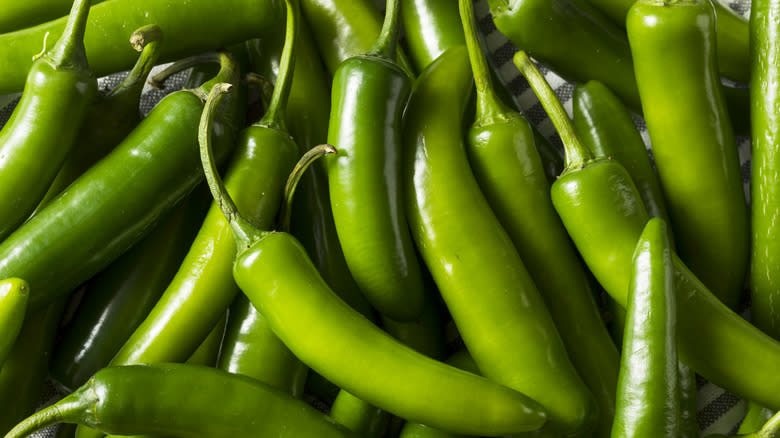
Jalapeños may be one of the most popular hot peppers on the American market, but they're far from the only ones out there. To confuse them with nearly-as-popular serranos is "easy," according to Morgan de Paulo, "especially if you are not familiar with their subtle differences." Alex Serena notes this is even easier given the similarity of their colors: "often green, but can vary to red as they ripen." And to do so would be a mistake, especially if you don't want your peppers too hot, because, as Hector Romero, Executive Chef at Alma Cocina Latina explains, jalapeños are "normally less spicy."
Luckily, there are a few key differences. Jalapeños, Serena says, tend to be thicker and shorter than thin, long serranos. Roberto Santibañez, Celebrity Chef and Culinary Director of Mi Vida in Washington, D.C. adds that jalapeños have "much wider shoulders" as compared to slim serranos. "Jalapeños are generally shorter and thicker," says de Paulo, "while serranos are longer and thinner. Additionally, jalapeños have a smooth skin, whereas serranos tend to have a slightly rougher texture.
Always Removing The Seeds And Membranes
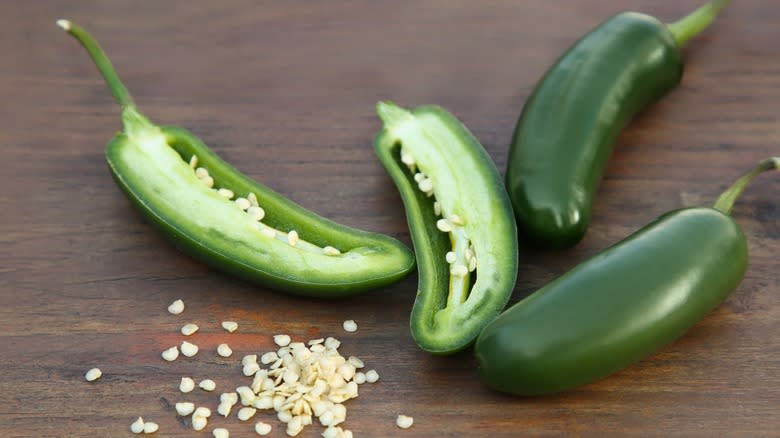
Many recipes calling for jalapeños first instruct the cook to remove any seeds and membranes. This, according to Chris Arellanes, is because this is where most of the chemical compound capsaicin, which makes peppers spicy, lives. Removing them, then, makes the pepper less spicy, something that's even more essential, according to Hector Romero, if you're going to cook them. "Cooking them whole could be a mistake if you are not a lover of highly spicy dishes," he says, "because heat releases the oils contained in seeds and membranes that increase the heat."
But removing these seeds and membranes isn't recommended by all of our chefs. Both Carlos Cruz and James Wozniuk note they generally leave both the seeds and membranes in the pepper. "I prefer to leave them in," says Wozniuk, "because I want the heat."
That said, this technique can make them more approachable, according to Serana. "Removing them can make the jalapeños milder and more palatable for those sensitive to heat," he says. And Ben Murray, Executive Chef and Culinary Director of gastro-advocacy restaurant Immigrant Food, agrees. "It depends on what you want them to do in a dish really," he says. "If you want a more subtle heat with all that jalapeño flavor, remove the membranes and seeds. If you want a nice punch that doesn't overwhelm a dish, just slice the jalapeños and keep the seeds and membranes intact!"
Assuming Jalapeños Are Always Going To Be Hot
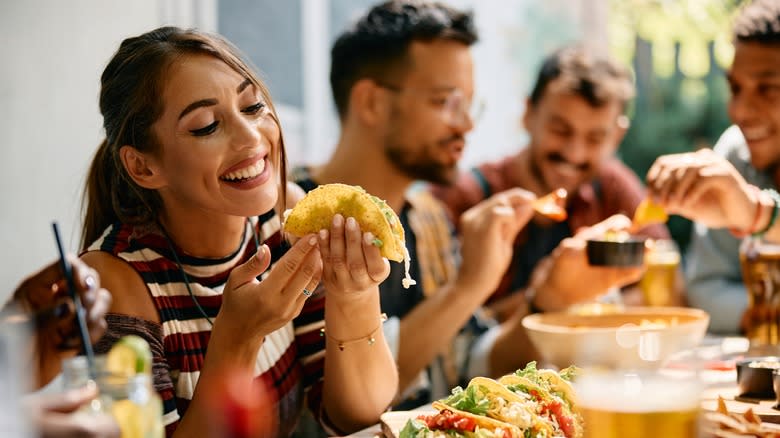
While jalapeños do pack some heat, they're far from the spiciest chile out there. In fact, according to Chris Arellanes, as compared to many other peppers, jalapeños are relatively "tame." Morgan de Paulo characterizes them as "moderately spicy."
"On the Scoville scale," he says, "they range from 2,500 to 8,000 Scoville Heat Units (SHU). They're not as mild as bell peppers but are much less spicy than habaneros or ghost peppers."
And Carlos Cruz notes that this has become particularly true in the past few years when jalapeños have become less spicy overall — something that D Magazine reports is a deliberate move on behalf of food producers. The article cites "The Mexican Chile Pepper Cookbook" by Dave DeWitt and José Marmolejo, which notes that since 60% of jalapeños are bought by big processing plants, these industrial giants get more sway in what the market looks like. And seeing as processors can balance out the heat by adding oleoresin capsicum, they seek intensity in flavor rather than heat.
That said, for James Wozniuk, "Grown in the right climate in peak season, they can be quite spicy." Ultimately, for Ben Murray, while jalapeños are "very very mild in the world of chili peppers," it all comes down to a question of individual taste. "What is spicy to me, may not be spicy to you. Each person has a different level for heat tolerance."
Not Knowing A Trick For Gauging A Jalapeño's Heat Before You Even Take A Bite
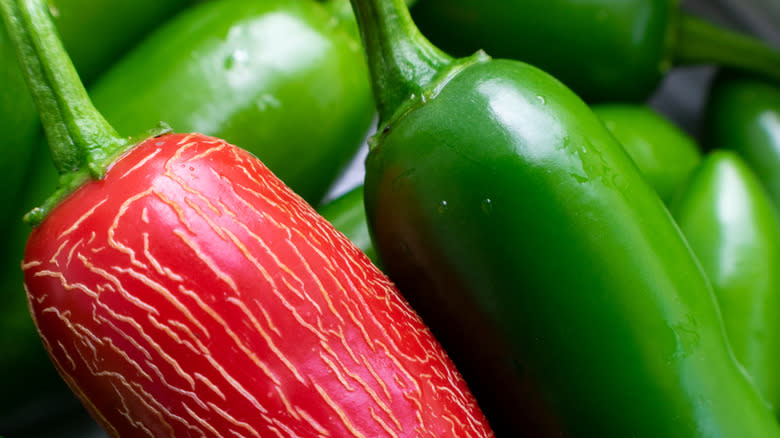
Jalapeños, like most chiles, vary widely in terms of heat levels. But luckily, you don't necessarily need to take a bite to find out if you've got a mild one or a hot one. "Spicier jalapeños often have small brown lines or 'stretch marks' on their skin," explains Morgan de Paulo. This, he says, is known as "corking" and indicates that "the pepper has been stressed, which usually results in a hotter pepper." And that's not all. According to Alex Serena, smaller jalapeños tend to have more heat, and for Chris Arellanes, "more mature peppers can pack a punch." Milder jalapeños, meanwhile, "are generally smoother and darker green," says de Paulo.
But while these are good indications of what to expect, they aren't foolproof rules, according to Arellanes. "It really depends on the pepper itself," he says. Which is why, for Roberto Santibañez, the only way to know for sure is to cut it open and smell it — "carefully."
"If you get a small jolt from the capsaicin then you have a spicy one!" he says. "But if you can sniff it 'comfortably' it's sure to be mild." Hector Romero, meanwhile, relies on an even more foolproof technique. "You just need to taste them."
Not Pickling Jalapeños At Home
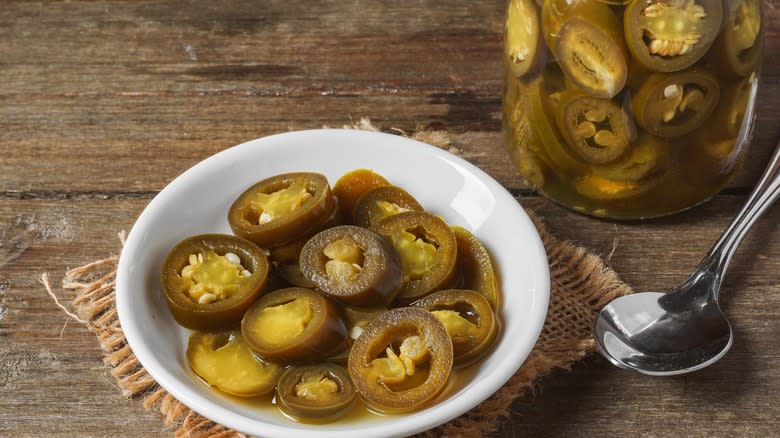
Pickled jalapeños are a staple of supermarket shelves for good reason: The acidity of the pickling liquid balances out the heat, making jalapeños even more moreish and delicious. It's no surprise that it's one of our experts' favorite ways to enjoy them — and what's more, it's a technique you can easily replicate at home by making homemade quick-pickled jalapeños.
Chris Arellanes, who recommends slicing them before pickling them "to release the oils." This, he says, "will help mature the pickle and give you more flavor and spice." Hector Romero, meanwhile, prefers to pickle whole jalapeños, something James Wozniuk says makes a great accompaniment to many Mexican mains.
Morgan de Paulo even notes that jalapeños can be fermented, a technique he uses to make his Tres Guapos hot sauces, which he makes with a combination of half flash-roasted and cold-smoked jalapeños and half raw, which ensures there's enough live, natural yeast to launch the fermentation process. "If the yeast are healthy and abundant they will reach peak fermentation in about 4-5 days," he says. "From there you can do any number of things. I juice the smoked fermented peppers and that becomes the base of the hot sauce. It's magic on just about everything and this method works wonderfully on just about any spicy pepper you want to preserve."
Not Stuffing Jalapeños
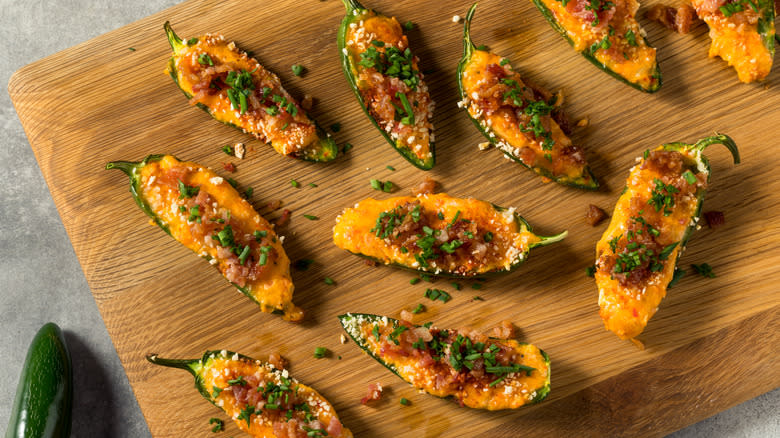
Jalapeño poppers are a beloved bar snack for good reason — and they can certainly make jalapeños that much more approachable, tempering some of the heat with cheese, breadcrumbs, and butter. "Stuffing jalapeños can be delicious as it adds a variety of flavors and textures," says Alex Serena, who cites cream cheese, cheddar, bacon bits, and spices as a popular stuffing combo. "Another favorite is stuffing them with ground meat, rice, and seasonings," he adds. Morgan de Paulo, meanwhile, suggests rendering chorizo and folding it into cream cheese. "Add some cotija and fresh herbs (green onion, cilantro, etc.) and stuff that mix into the jalapeño," he adds, noting you can then bread, fry or air-fry, and serve the spicy bites. You can even wrap them in pastry for mummy-wrapped jalapeño poppers perfect for Halloween.
But such approaches can be a bit divisive among our experts, firstly because they're not all that traditional. "Traditionally, poblanos are the chilis that get stuffed in Mexican culture," says De Paulo, and most of our chefs note that they rarely actually stuff jalapeños at home. "I love the simple, green, vegetal, spicy flavor of a plain jalapeño," says James Wozniuk, "But I would also not shy away from one stuffed with cream cheese and wrapped in bacon!" Hector Romero agrees. "The truth is that I prefer the natural flavor, raw or as an ingredient for a cooked preparation."
Not Experimenting With Different Cooking Methods
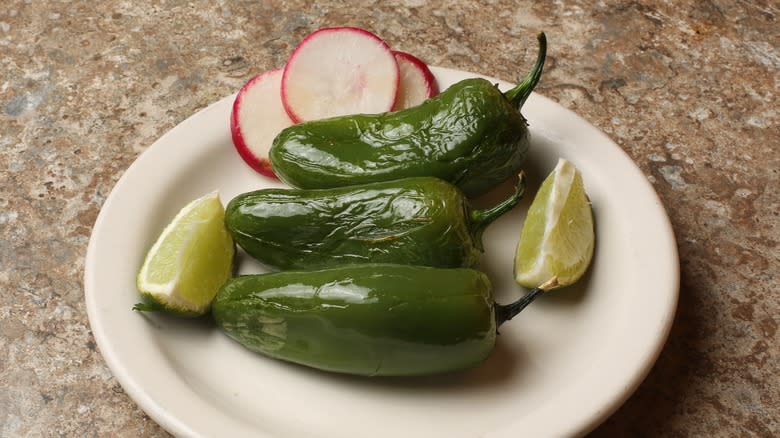
There are many different ways you can cook jalapeños, from sautéing to roasting, to grilling and boiling. Raw or pickled, cooked or fermented, each method imparts a unique flavor to the pepper. For Roberto Santibañez, roasting them "brings more sweetness and smoky flavors." Frying them in hot oil, meanwhile, may tenderize them but it also increases their heat."
Chris Arellanes loves grilling jalapeños, noting they're perfect for sauces and marinades. And James Wozniuk agrees, saying that when he has time, he loves to roast or grill the peppers for "a deeper flavor in addition to the heat." Sautéing, meanwhile, is a technique he relies on only when he's in a hurry, "for a quick bit of spice."
For Morgan de Paulo, the method you choose ultimately comes down to the result you seek. Sautéing, he says, "will maintain the integrity of the fresh flavor of the pepper as well as a majority of more pronounced heat." Roasting or grilling, meanwhile, leads to a mellower pepper with a subtly rounded flavor in addition to slight smokiness. Ultimately, the jalapeño recipe you're using will dictate the cooking method you choose. "It really just depends on the cuisine you're cooking," he says, "and how much 'flair' you want to put into it. Be creative and enjoy the process."
Not Making Jalapeño Dust
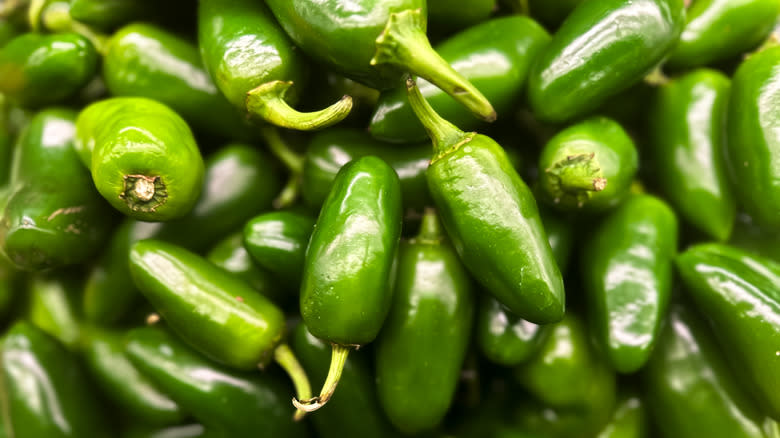
Jalapeño dust is the latest TikTok trend — a hack that calls for freezing fresh jalapeños and then grating them over the top of a dish. And our experts love it. "Jalapeño dust is a fun and versatile trend," says Alex Serena. "It can be used to add heat and flavor to a variety of dishes, from popcorn and fries to cocktails and grilled meats. It's a great way to incorporate jalapeño flavor without the texture of fresh peppers."
But for our experts, this craze is far from a new thing. "Making spices, dusts, etc ... is just another method of preservation that consequently can add a bit of drama to any plate," says Morgan de Paulo. And freezing isn't the only way to get this result. "Dehydrating that product and chucking it in the blender until it's powder works wonderfully for other applications down the road," he says. The resulting powder, Chris Arellanes notes, is "very versatile." He particularly loves using it with Asian ingredients, while Roberto Santibañez loves using it with salt and vitamin C to make "a tasty rim for drinks."
Not Using Jalapeños In Cocktails
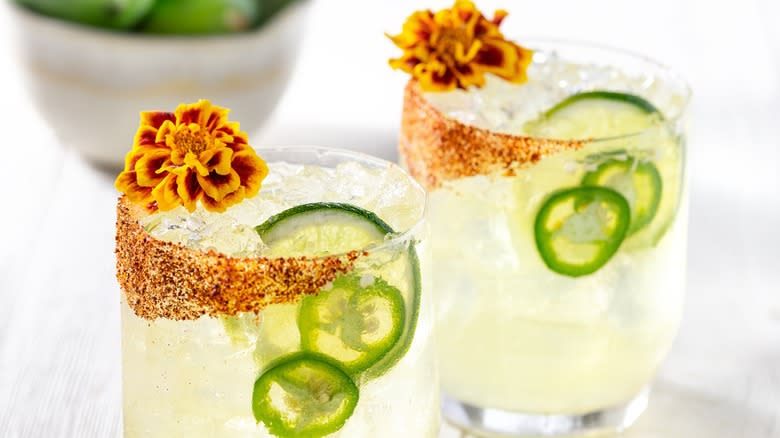
If this is the first time you're hearing about jalapeños in cocktails, you're in for a real treat. "Spicy flavors and liquors or alcoholic beverages usually work well together," according to Hector Romero. And the possibilities for incorporating jalapeños into cocktails are nearly endless, according to Alex Serena. "They can be muddled into drinks like margaritas, infused into spirits, or used as garnishes," he says. "A jalapeño margarita, for instance, combines the heat of the pepper with the sweetness of the cocktail."
He recommends cold-infusing them into neutral spirits like vodka for several hours, as he does at Telefèric Barcelona. After 72 hours of infusion, the resulting vodka is ready to use in one of his bestsellers: a spicy sangria. And Morgan de Paulo suggests using a jalapeño-based hot sauce to infuse drinks like a bloody mary or a bloody bull with a bit of heat.
Chris Arellanes encourages home bartenders to let their imagination be their guide, offering off-the-cuff suggestions ranging from a smoked peach and jalapeño martini to a jalapeño, sesame, and chocolate Manhattan. "Best advice is: try it," says de Paulo. "If it works great! Refine the idea into something magical. If not, you also learned what not to do ... win win."
Touching Your Eyes After Prepping Jalapeños

We've all done it: Been cutting jalapeños at home when all of a sudden, your eye itches. You scratch it, and slowly but surely, you begin to feel the burn. When the capsaicin in jalapeños comes into contact with delicate mucous membranes, irritation or even "serious burning" can ensue, according to Chris Arellanes. "It's like sticking a hot poker in your eye," adds Carlos Cruz. If you've found yourself in this predicament, he recommends rinsing your eyes out with water. "But other than that," he says, "you just have to tough it out."
The best cure, in this case, is undoubtedly prevention. If you're handling chiles regularly, Morgan de Paulo recommends getting into the habit of wearing gloves whenever you cut them. "And always wash your hands thoroughly," he says. "I have made the mistake of not doing so and rubbing my eye or touching my face more than I care to recall."
Our experts also recommend rinsing your eye, not just with water, but with milk. "The milk fats will somewhat neutralize the effect" of the fat-soluble chemical, says de Paulo. In fact, he warns against using water at all. "That will spread capsaicin," he says, "furthering the irritation."
Not Knowing Tips For Quelling The Heat

The fat solubility of capsaicin is also helpful to note if ever you get too spicy a bite. "The oldest trick in the book," says Chris Arellanes, "is to drink good ol' fashion whole milk."
But milk isn't the only dairy product that can diminish the effects of capsaicin's palate-burning effects. "In some cultures like in India," says Hector Romero, "yogurt is used to alleviate the spice of the meals, so I follow that principle," says Romero. James Wozniuk, too, says a mango lassi may be the ideal antidote — all the more so given its sweetness. "Something sugary will help to cool the burn, such as a pinch of sugar or chocolate," says Carlos Cruz.
Alex Serena adds other suggestions, like bread or rice, can "help absorb and neutralize" capsaicin thanks to its starchiness. But for Roberto Santibañez, an even simpler solution prevails. "Drink a lot of water," he suggests. "It's really the best."
Read the original article on Mashed.

 Yahoo Lifestyle
Yahoo Lifestyle 
